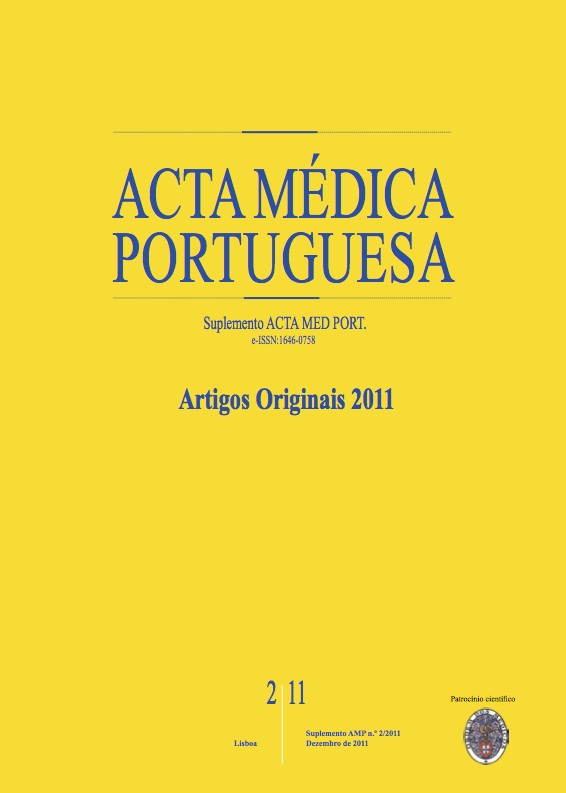Multicystic dysplastic kidney. In defense of A conservative experience.
DOI:
https://doi.org/10.20344/amp.1437Abstract
Multicystic dysplastic kidney (MDK) is one of the most common congenital anomalies of the urinary tract and the main cystic renal disease in children. Our institution follow-up protocol of MDK uses, as has been performed more widely in the last two decades, a conservative attitude.To characterize MDK cases followed in our Outpatient Clinic of Pediatric Nephrology, evaluate their progress and reflect on the protocol adopted.36 MDK patients observed between January 1995 and December 2009 were included in this retrospective study and followed-up. In 35 children the diagnosis was the result of prenatal ultrasound. All children underwent a systematic protocol, including conservative treatment (no surgery) and periodic clinical, laboratory and ultrasound evaluation. All children underwent a MAG3 renogram or a 99mTc-DMSA renal scintigraphy and a voiding cystourethrography, only repeated in cases of vesicoureteral reflux (VUR).Eighteen children (50%) are male. The median age of first visit was four weeks. The median of follow-up was 65 months. The MDK was in the left kidney in 20 children (56%). The median age of onset was 10 and six weeks Contralateral nephro-urologic pathology was identified in 10 cases (28%): seven children with VUR (grade ≥ IV in three), two with ureteropelvic junction obstruction (UPJO) and one with mild pelvic dilatation. There was involution of dysplastic kidney in 27 cases (75%), partial in 24 and total in three. The involution rate was higher in the first 36 months. There was a progressive compensatory hypertrophy of the contralateral kidney, with the highest rate in the first two years of life. There was resolution of VUR in five of the seven units reflux (three spontaneous and two after ureteral reimplantation). The two children with UPJO underwent surgery. There was no malignant degeneration and there was not carry out any nephrectomy of dysplastic kidney. Urinary infection occurred in nine children (25%), three of which have VUR and two with UPJO. There were no cases of hypertension or decreased glomerular filtration rate.The results of this study are generally consistent with other casuistics and confirm the fairness of a conservative attitude in the approach of children with MDK. This clinical approach is safe, with a minimum incidence of complications, with tendency to involution of dysplasic kidney being the rule.Downloads
Downloads
How to Cite
Issue
Section
License
All the articles published in the AMP are open access and comply with the requirements of funding agencies or academic institutions. The AMP is governed by the terms of the Creative Commons ‘Attribution – Non-Commercial Use - (CC-BY-NC)’ license, regarding the use by third parties.
It is the author’s responsibility to obtain approval for the reproduction of figures, tables, etc. from other publications.
Upon acceptance of an article for publication, the authors will be asked to complete the ICMJE “Copyright Liability and Copyright Sharing Statement “(http://www.actamedicaportuguesa.com/info/AMP-NormasPublicacao.pdf) and the “Declaration of Potential Conflicts of Interest” (http:// www.icmje.org/conflicts-of-interest). An e-mail will be sent to the corresponding author to acknowledge receipt of the manuscript.
After publication, the authors are authorised to make their articles available in repositories of their institutions of origin, as long as they always mention where they were published and according to the Creative Commons license.









